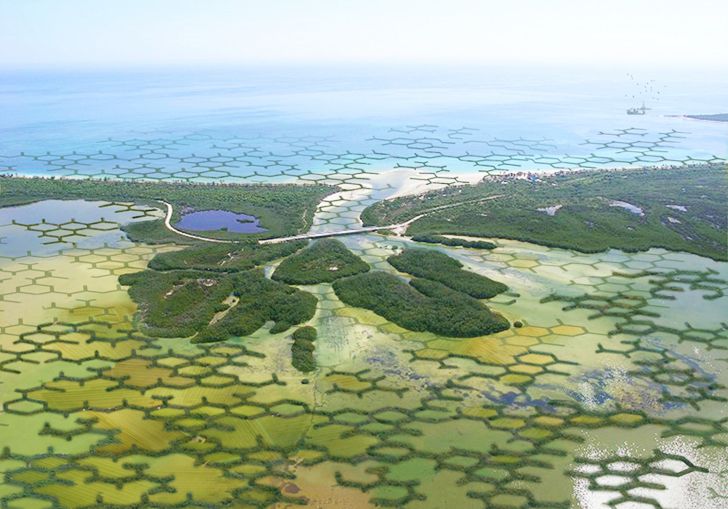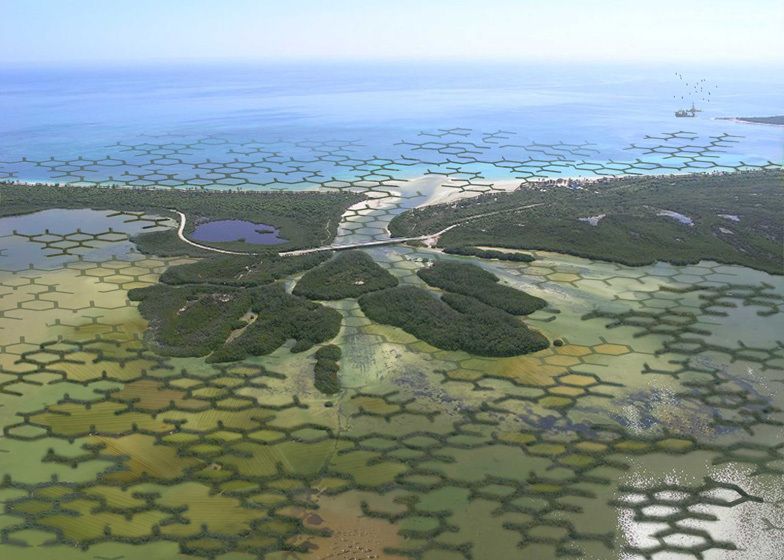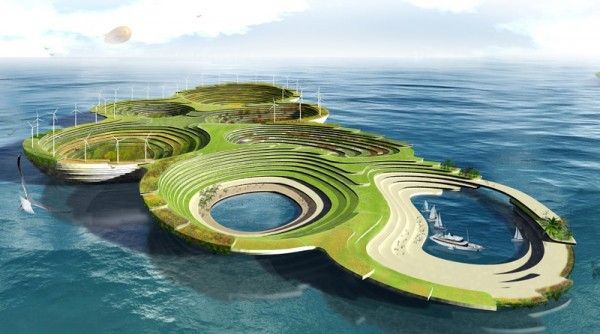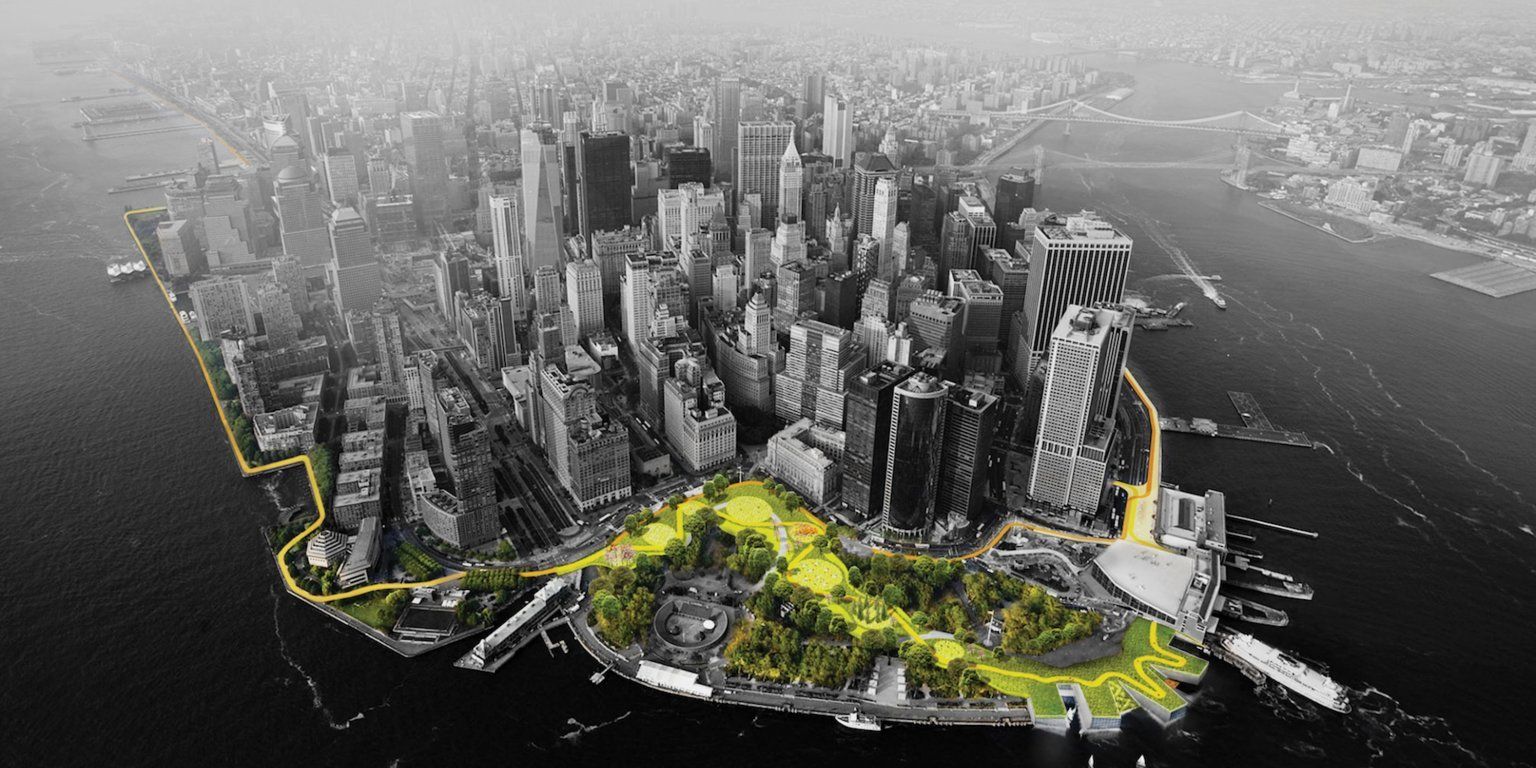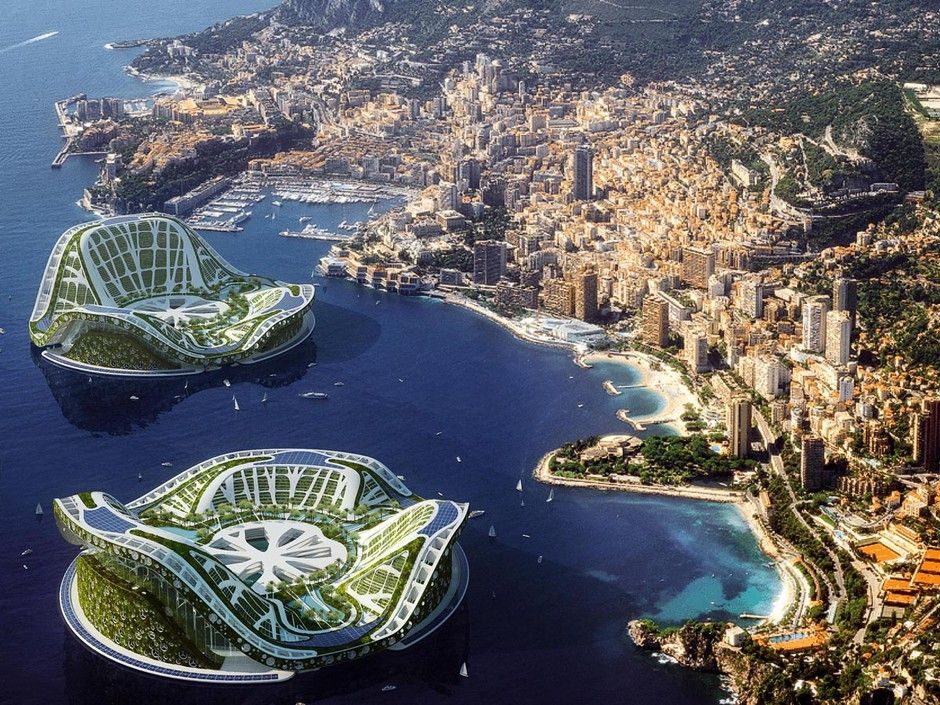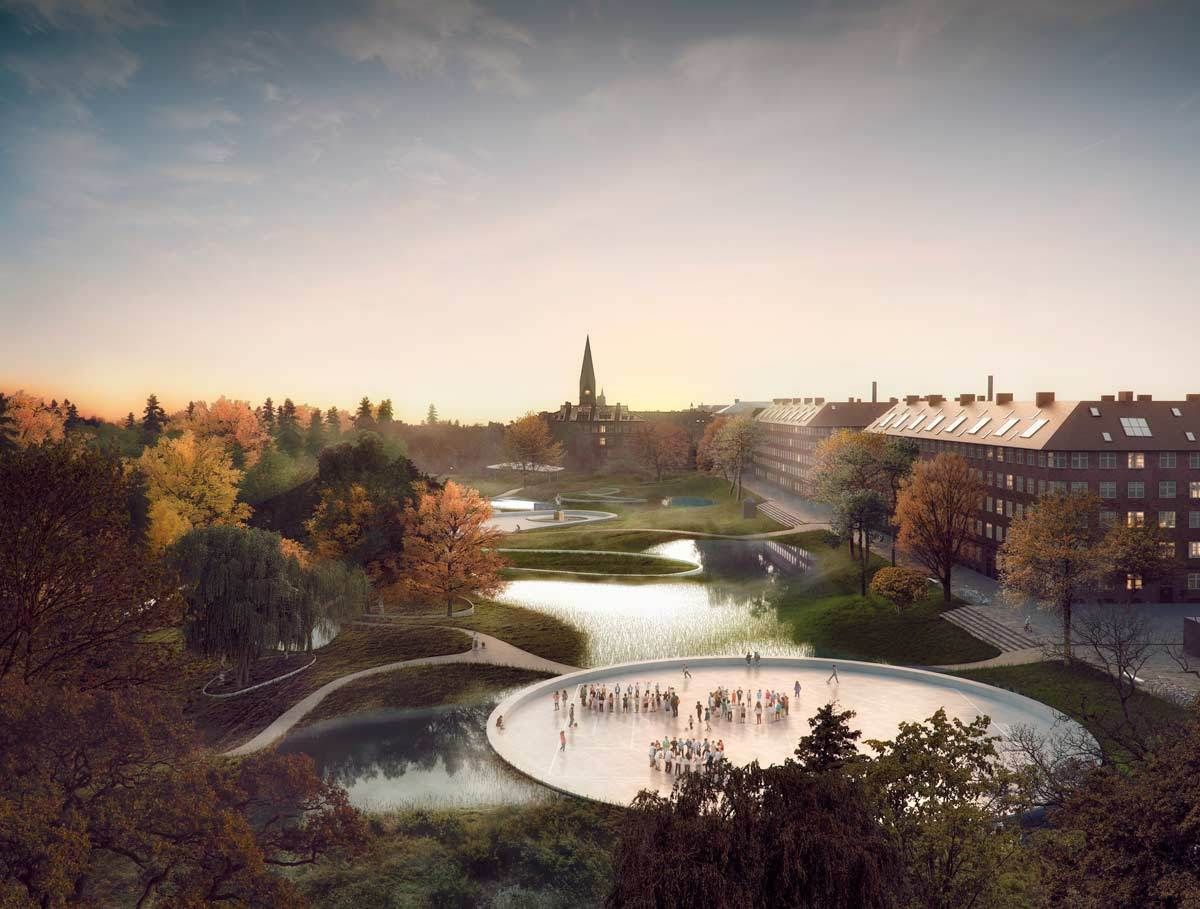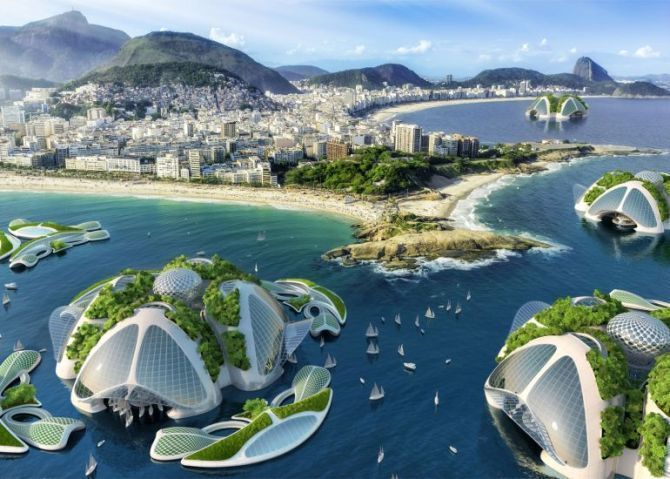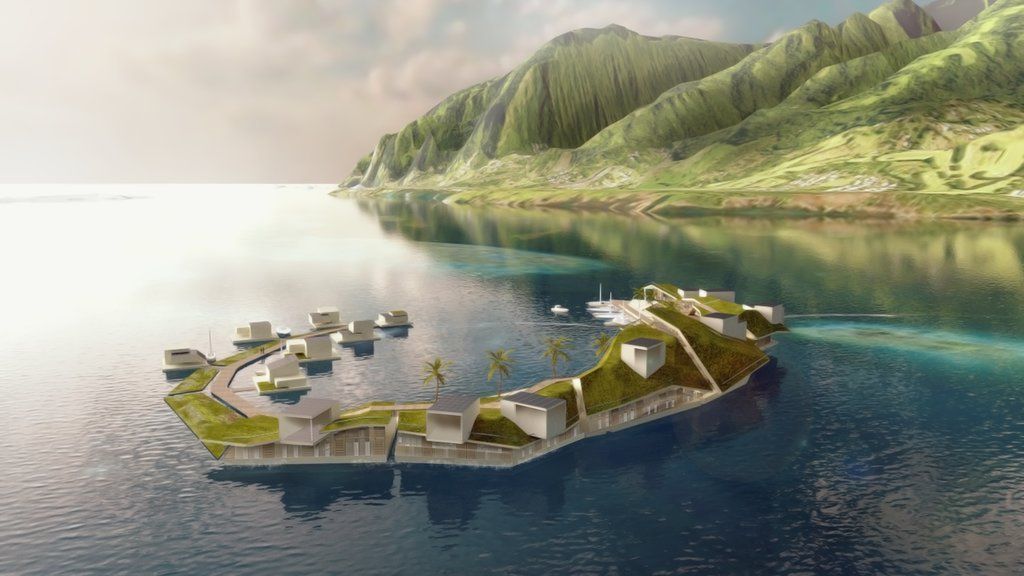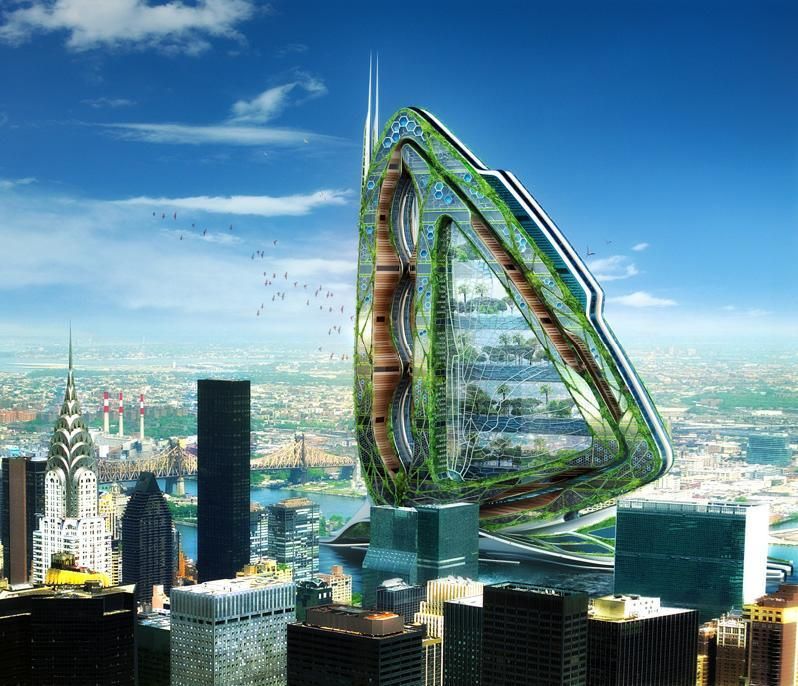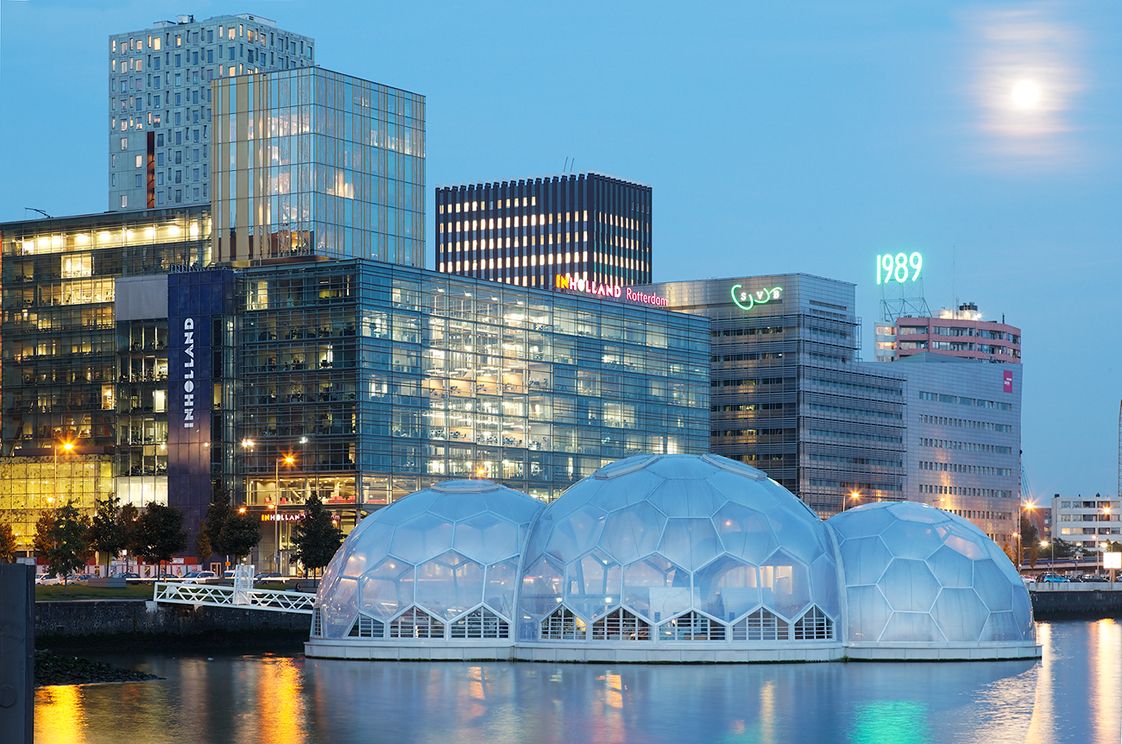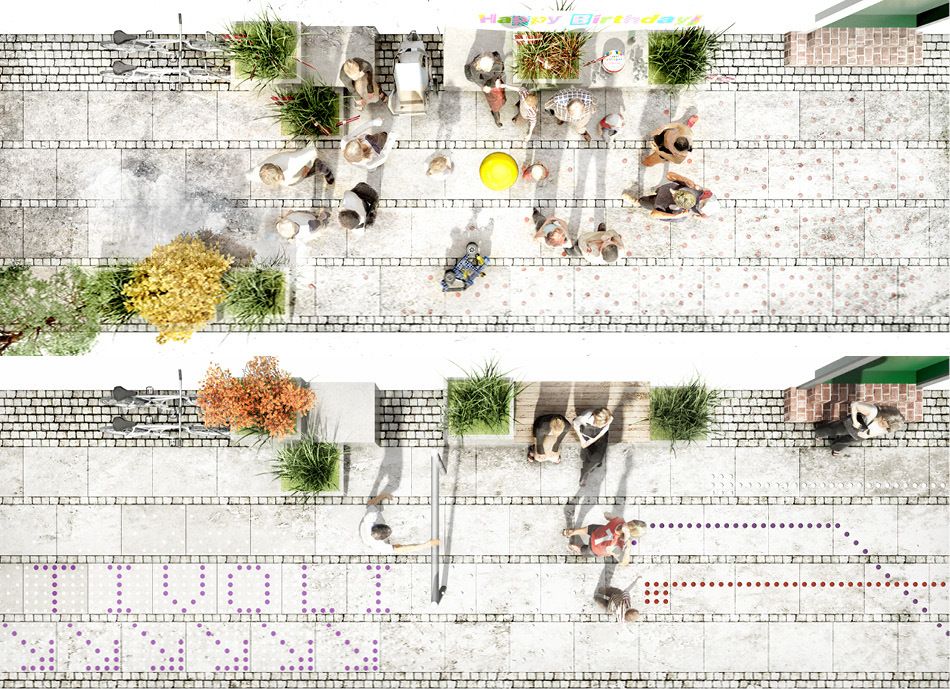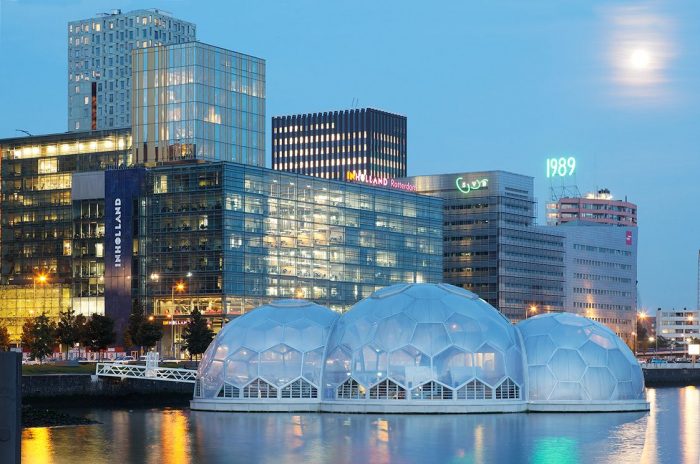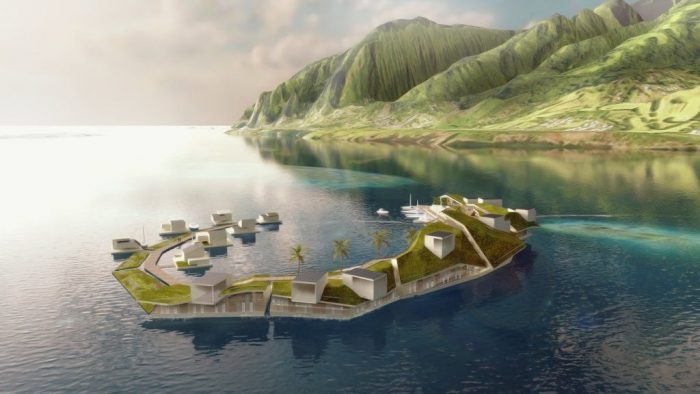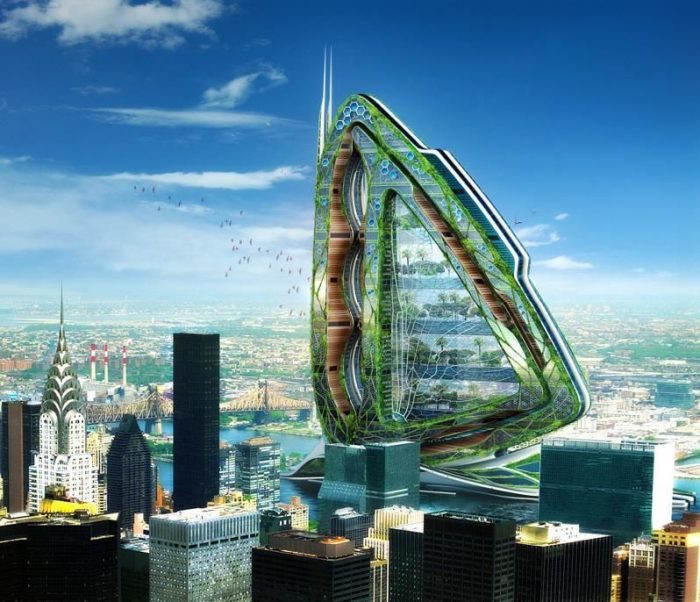Designed by the Belgian firm lead by architect Vincent Callebaut as an ecologically friendly floating city able to house 50,000 people completely self-sufficiently. Lilypad was designed for the Oceans 2008 conference to meet the four main environmental challenges as seen by the Organization of Economic Co-operation and Development (OECD): climate change, the lack of fresh water, biodiversity, and health. Inspired by the lilypad of the Amazonia Victoria Regia but enlarged over 250 times, the city is aesthetically pleasing while producing more energy than it consumes and cleanly recycling most of its waste products. Project description from Vincent Callebaut Architectures comes after the jump.
 LILYPAD, A FLOATING ECOPOLIS FOR CLIMATE REFUGEES
LILYPAD, A FLOATING ECOPOLIS FOR CLIMATE REFUGEES
2100, A LARGE CROWD OF ECOLOGICAL REFUGEES
Further to the anthropogenic activity, the climate warms up and the ocean level increases. According to the principle of Archimedes and contrary to preconceived notions, the melting of the arctic ice-floe will not change the rising of the water exactly as an ice cube melting in a glass of water does not make its level rise. However, there are two huge ice reservoirs that are not on the water and whose melting will transfer their volume towards the oceans, leading to their rising. It deals with the ice caps of Antarctic and Greenland on the one hand, and the continental glaciers on the other hand. Another reason of the ocean rising, that does not have anything to do with the ice melting is the water dilatation under the effect of the temperature.
According to the less alarming forecasts of the GIEC (Intergovernmental group on the evolution of the climate), the ocean level should rise from 20 to 90 cm during the 21st Century with a status quo by 50 cm (versus 10 cm in the 20th Century). The international scientific scene assets that a temperature elevation of 1°C will lead to water rising of 1 meter. This increase of 1 m would bring ground losses emerged of approximately 0.05% in Uruguay, 1% in Egypt, 6% in the Netherlands, 17.5% in Bangladesh and up to 80% approximately in the atoll Majuro in Oceania (Marshall and Kiribati islands and step by step the Maldives islands).
 If the first meter is not very funny with more than 50 million of people affected in the developing countries, the situation is worse with the second one. Countries like Vietnam, Egypt, Bangladesh, Guyana or Bahamas will see their most inhabited places swamped at each flood and their most fertile fields devastated by the invasion of salt water damaging the local ecosystems. New York, Bombay, Calcutta, Hô Chi Minh City, Shanghai, Miami, Lagos, Abidjan, Djakarta, Alexandria… not les that 250 million of climatic refugees and 9% of the GDP threatened if we not build protections related to such a threat. It is the demonstration inflicted to reluctant spirits by a climatological study of the OECD (Organization for Economic Cooperation and Development) and that challenges our imagination of eco-conception!
If the first meter is not very funny with more than 50 million of people affected in the developing countries, the situation is worse with the second one. Countries like Vietnam, Egypt, Bangladesh, Guyana or Bahamas will see their most inhabited places swamped at each flood and their most fertile fields devastated by the invasion of salt water damaging the local ecosystems. New York, Bombay, Calcutta, Hô Chi Minh City, Shanghai, Miami, Lagos, Abidjan, Djakarta, Alexandria… not les that 250 million of climatic refugees and 9% of the GDP threatened if we not build protections related to such a threat. It is the demonstration inflicted to reluctant spirits by a climatological study of the OECD (Organization for Economic Cooperation and Development) and that challenges our imagination of eco-conception!
 The water rising being not written in the agenda of the Grenelle agreements on environment in France, it is primordial in terms of environmental crisis and climatic exodus to pass from now on from a strategy of reaction in emergency to a strategy of a adaptation and long-lasting anticipation. It is surprising, whereas some islands prepare their disappearing to see that the management of the rising of the ocean level does not seem to worry the governments beyond measure. More surprising to see that the populations of the developed countries continue to rush on the littoral to build districts over there; houses and buildings dedicated to a certain flood.
The water rising being not written in the agenda of the Grenelle agreements on environment in France, it is primordial in terms of environmental crisis and climatic exodus to pass from now on from a strategy of reaction in emergency to a strategy of a adaptation and long-lasting anticipation. It is surprising, whereas some islands prepare their disappearing to see that the management of the rising of the ocean level does not seem to worry the governments beyond measure. More surprising to see that the populations of the developed countries continue to rush on the littoral to build districts over there; houses and buildings dedicated to a certain flood.
